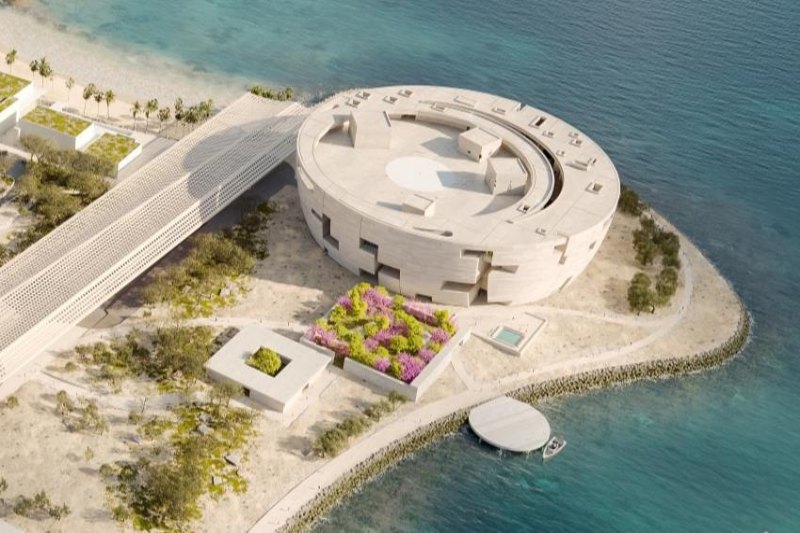Herzog & De Meuron Reveals Concrete Museum on Qatari Island

Images of the Lusail Museum, a strong, drum-shaped gallery and museum created by Swiss architects Herzog & de Meuron, have been made public by cultural organization Qatar Museums.
Situated on Al Maha Island in the vicinity of Doha, the museum intends to become a cultural hub for research, teaching, and exhibitions. Its interior will have references to old Islamic architecture.
The five-story structure designed by Herzog & De Meuron will be shaped like three spheres that cross over to reveal the museum’s interior chambers.
In response to the surrounding coastal environment, the building’s facade will be abrasive and sandy, using earthy-toned, striated concrete that is meant to mix in with the surrounding landscape.
The museum will be surrounded by recessed windows and entry points created by deep cuts and geometric punctures, and its roofscape will be covered in a number of skylights.
The studio claims that the structure was meant to shield the artwork from overexposure to natural light while yet giving guests a clear view of the sea.
The building’s circling volumes will be connected by a crescent-shaped, skylit promenade that serves as a link between the entry, central lobby, and gallery programs.
The structure will have a prayer area, cafe, library, theater, rooftop terrace, and upper levels that will hold the Orientalist art collection of Lusail Museum.
Four gallery rooms, which will serve as the exhibition’s focal point, will imitate interior aspects taken from notable Islamic structures, such as the dome over Sultan Murad III’s bedroom in Istanbul’s Palace of Topkapi and the Aljafaria Palace dome in Zaragoza, Spain.
The studio’s goal is to provide guests unexpected spatial experiences by incorporating ornamental aspects and geometry from the traditional architecture into the cupolas.
The domed rooms at roof level will poke through the floor plate, which will otherwise stay open to accommodate public activities like an outdoor movie theater.
Although rough and expressive concrete will dominate the building’s shape, Herzog & de Meuron will use zones of material contrast to highlight significant architectural elements.
For instance, glossy plaster will be used to build a spiral staircase that leads to exhibition rooms, and reflective metal will be used to cover the prayer chamber.
The facility will also feature metal elements, textiles, ceramic tiles, cushioned nooks, and tactile wood.
As per Qatar Museums, the construction process will involve a cooperative effort between local artists and crafters to guarantee that the design’s authentic regional references are maintained.
The Lusail Museum is anticipated to begin construction later in 2024 and be finished by 2029.
The Lusail Museum’s design came about as a result of Qatar’s declaration that Herzog & de Meuron, OMA, and Elemental—three renowned architecture studios—would be building three new museums.
Additionally, Lusail experienced significant expansion in preparation for the 2022 FIFA World Cup, including the design of four buildings covered in aluminum and a golden football stadium by Foster + Partners, both of which are now under construction.
The Pritzker Prize-winning firm Herzog & de Meuron has finished an infinity pool at Lake Como that disappears into the lake and has revealed plans for a massive cube storage structure for museums in Seoul.